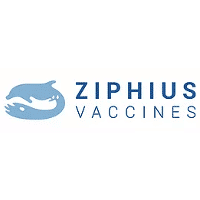预约演示
更新于:2025-07-31
Z-010
更新于:2025-07-31
概要
基本信息
非在研机构- |
权益机构- |
最高研发阶段临床前 |
首次获批日期- |
最高研发阶段(中国)- |
特殊审评- |
关联
100 项与 Z-010 相关的临床结果
登录后查看更多信息
100 项与 Z-010 相关的转化医学
登录后查看更多信息
100 项与 Z-010 相关的专利(医药)
登录后查看更多信息
23
项与 Z-010 相关的文献(医药)2025-05-01·EUROPEAN JOURNAL OF MEDICINAL CHEMISTRY
Aromatic nitroolefin with inhibition efficacy in triple-negative breast cancer cells by dual targeting RXRα and tubulins
Article
作者: Qu, Xiaofang ; Ye, Xiaohong ; Xu, Yunqing ; Wang, Yanxia ; Bu, Liang ; Cai, Hongchen ; Zeng, Zhiping ; Xu, Lin ; Zhou, Hu
We previously identified that 1-(2-Nitrovinyl)naphthalene (Z-10) is a ligand of retinoid x receptor α (RXRα) with a potent anti-breast cancer efficacy and revealed that nitro group is an essential pharmacophore in Z-10. In this study, we defined that the double bond of the nitrovinyl group is also vital for Z-10 to bind and activate RXRα. Mechanistically, the double bond has a chemical ability to mediate Z-10's covalent binding of RXRα via the Michael addition reaction with Cys432. By retaining the nitrovinyl group, a series of Z-10 analogues with different aromatic groups and different aromatic ring-positions of nitrovinyl group and alkoxy groups were designed and synthesized. We found that some analogues including compound 30 show stronger ability than Z-10 in inhibiting TNFα survival signal in MDA-MB-231 breast cancer cells. Interestingly, these RXRα ligands also bind to tubulins likely through the similar covalent interaction and induce the degradation of tubulins and cell cycle arrest in MDA-MB-231 cells, of which 30 displays the strongest efficacy. Importantly, these analogues and TNFα exhibit synergistic effects in inducing breast cancer cell apoptosis, of which 30 shows greater efficacy than Z-10. Together, our study provides a theoretical basis for the RXRα and tubulin dual-targeting drug design for breast cancer treatment.
2025-02-13·JOURNAL OF MEDICINAL CHEMISTRY
Discovery of N-(1,2,4-Thiadiazol-5-yl)benzo[b]oxepine-4-carboxamide Derivatives as Novel Antiresistance Androgen Receptor Antagonists
Article
作者: Liao, Jinbiao ; Wang, Ying ; Xu, Xiaohong ; Xu, Lei ; Sheng, Rong ; Li, Dan ; Shan, Luhu ; Fu, Weitao ; Pan, Peichen ; Wang, Huating ; Wang, Xinyue ; Liao, Jianing ; Hou, Tingjun ; Chai, Xin
The ligand-binding pocket of the androgen receptor (AR) is the targeting site of all clinically used AR antagonists. However, various drug-resistant mutations emerged in the pocket. We previously reported a new targeting site at the dimer interface of AR (dimer interface pocket) and identified a novel antagonist M17-B15 that failed in oral administration. In this study, the head part of M17-B15 was substituted with divergent structures. Potent antagonist Z10 with benzo[b]oxepine was first identified. Subsequent structural optimization on the 2-oxopropyl moiety of Z10 generated the more powerful Y5 (IC50 = 0.04 μM). Out of the ordinary, Y5 demonstrated dual mechanisms of action, antagonized AR by disrupting AR dimerization, and induced AR degradation via the ubiquitin-proteasome pathway. Furthermore, Y5 exhibited excellent activity against variant drug-resistant AR mutants comparable to recently approved darolutamide. Furthermore, Y5 effectively suppressed the tumor growth of the LNCaP xenograft via oral administration, providing a potential novel therapeutic for drug-resistant prostate cancer.
2024-04-01·Biochimica et biophysica acta. Molecular basis of disease
Pyrazole derivative Z10 ameliorates acute pancreatitis by inhibiting the ERK/Ddt pathway
Article
作者: Li, Wanlian ; Pan, Jian ; Zeng, Wenying ; Huang, Borong ; Xiao, Juan ; Lu, Xing
Acute pancreatitis (AP) can lead to death; however, there is no specific treatment for AP. Screening of drugs for AP treatment is rarely performed. Compounds were screened in a primary pancreatic acinar cell and peritoneal macrophage coculture system. Compounds were used in vitro and in vivo. Compound targets were predicted and validated. Among the 18 nitrogen-containing heterocycles, Z10 was shown to decrease the cerulein plus lipopolysaccharide (CL)-induced secretion of both acinar digestive enzymes and macrophage cytokines. Z10 was also shown to ameliorate CL-induced or sodium taurocholate-induced AP in mice. Proteomics analysis and enzyme linked immunosorbent assay (ELISA) revealed that Z10 decreased the levels of D-dopachrome tautomerase (Ddt) within macrophages and those in the extracellular milieu under CL treatment. Z10 also decreased Ddt expression in AP mice. Moreover, exogenous Ddt induced cytokine and digestive enzyme secretion, which could be inhibited by Z10. Ddt knockdown inhibited CL-induced cytokine secretion. Medium from CL-treated macrophages induced the release of amylase by acinar cells, and Ddt knockdown medium decreased amylase secretion. The target of Z10 was predicted to be ERK2. Z10 increased the thermostability of ERK1/2 but not ERK1 K72A/ERK2 K52A. The docking poses of ERK1 and ERK2 with Z10 were similar. Z10 inhibited ERK1/2 phosphorylation, and Ddt levels and cytokines were regulated by ERK1/2 during AP. Additionally, Z10 could not further inhibit cytokines under ERK1/2 knockdown with CL. Thus, this study revealed that Z10-mediated ERK1/2 inhibition decreased Ddt expression and secretion by macrophages. Ddt inhibition decreased cytokine release and digestive enzyme secretion.
100 项与 Z-010 相关的药物交易
登录后查看更多信息
研发状态
10 条进展最快的记录, 后查看更多信息
登录
| 适应症 | 最高研发状态 | 国家/地区 | 公司 | 日期 |
|---|---|---|---|---|
| 泛冠状病毒 | 临床前 | 比利时 | 2025-03-01 |
登录后查看更多信息
临床结果
临床结果
适应症
分期
评价
查看全部结果
| 研究 | 分期 | 人群特征 | 评价人数 | 分组 | 结果 | 评价 | 发布日期 |
|---|
No Data | |||||||
登录后查看更多信息
转化医学
使用我们的转化医学数据加速您的研究。
登录
或

药物交易
使用我们的药物交易数据加速您的研究。
登录
或

核心专利
使用我们的核心专利数据促进您的研究。
登录
或

临床分析
紧跟全球注册中心的最新临床试验。
登录
或

批准
利用最新的监管批准信息加速您的研究。
登录
或

特殊审评
只需点击几下即可了解关键药物信息。
登录
或

生物医药百科问答
全新生物医药AI Agent 覆盖科研全链路,让突破性发现快人一步
立即开始免费试用!
智慧芽新药情报库是智慧芽专为生命科学人士构建的基于AI的创新药情报平台,助您全方位提升您的研发与决策效率。
立即开始数据试用!
智慧芽新药库数据也通过智慧芽数据服务平台,以API或者数据包形式对外开放,助您更加充分利用智慧芽新药情报信息。
生物序列数据库
生物药研发创新
免费使用
化学结构数据库
小分子化药研发创新
免费使用
